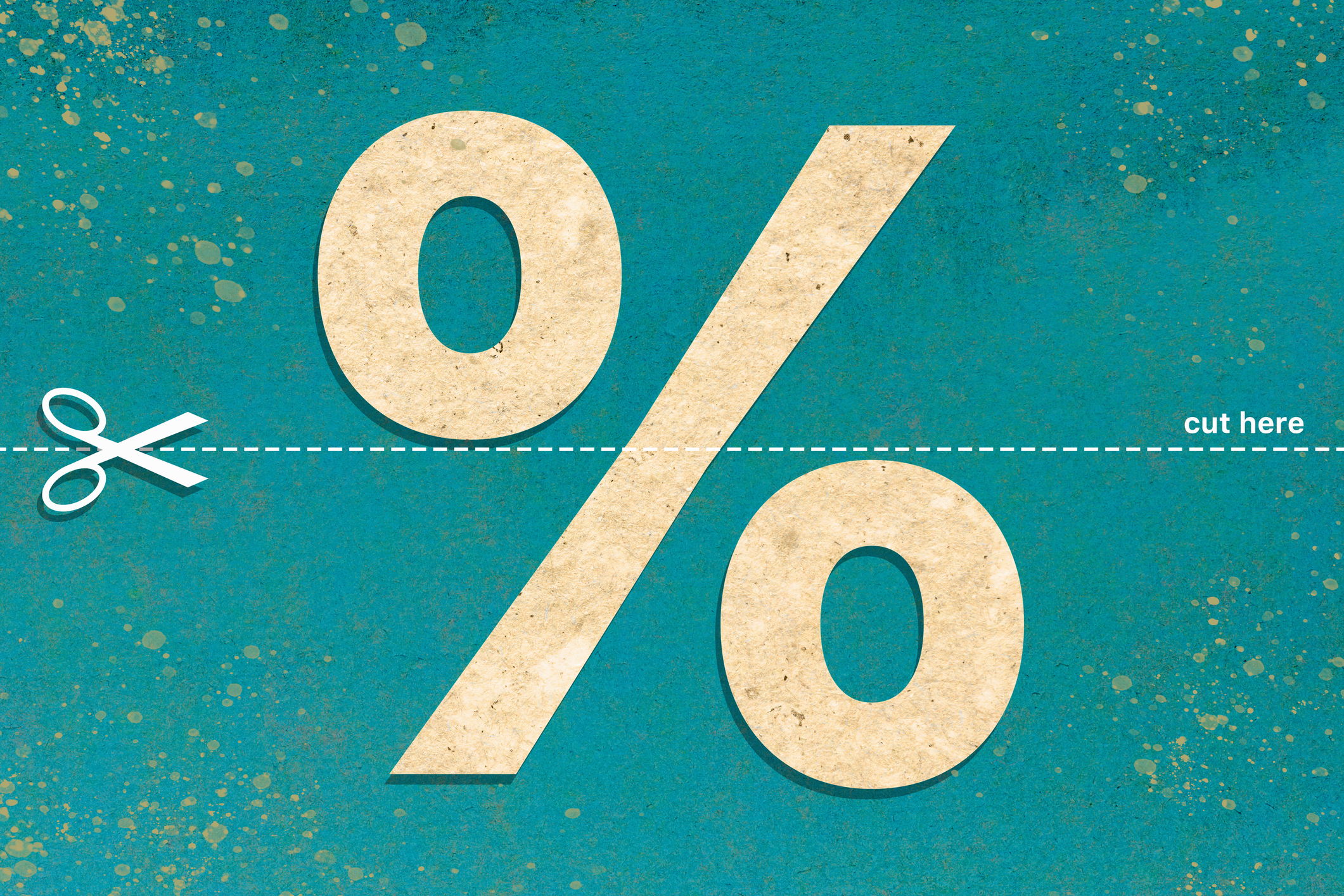Who Do High Interest Rates Hurt? College Students
College students will pay more to borrow. Savers will continue to benefit but need to remain vigilant.


Signs that inflation is easing have reignited hopes that the Federal Reserve Board will reduce interest rates as early as this summer. But even if that happens, the rate cut will come too late for thousands of college students and their families.
The interest rate for federal undergraduate student loans disbursed between July 1, 2024, and June 30, 2025, will be 6.53%, the highest rate in 16 years. The rate for federal Parent PLUS loans, which parents can take out to cover the cost of a child’s college attendance, will jump to 9.08%, a 33-year high.
Interest rates for federal student loans are adjusted annually, based on the high yield of the last 10-year Treasury auction in May. The rate is fixed for the life of the loan, even if overall interest rates decline. However, because rates are fixed, outstanding federal student loans won’t be affected. For example, if you took out a federal student loan between July 1, 2023, and June 30, 2024, your rate will remain at 5.5%
From just $107.88 $24.99 for Kiplinger Personal Finance
Become a smarter, better informed investor. Subscribe from just $107.88 $24.99, plus get up to 4 Special Issues

Sign up for Kiplinger’s Free Newsletters
Profit and prosper with the best of expert advice on investing, taxes, retirement, personal finance and more - straight to your e-mail.
Profit and prosper with the best of expert advice - straight to your e-mail.
Private student loans
As college costs continue to rise, the rate increase will make it even more difficult for families to pay for college. Although loans from private lenders may offer more competitive rates, they’re available only to students who have a co-signer with excellent credit, says Mark Kantrowitz, author of How to Appeal for More College Financial Aid. Plus, parents who co-sign are on the hook if the primary borrower defaults and their credit history could suffer if the borrower misses or makes late payments.
In addition, private student loans typically lack many important features of federal student loans, including deferment, income-based repayment and loan forgiveness, Kantrowitz says.
Limit your debt
A better strategy for both students and their parents is to limit debt as much as possible. Students who stay within the thresholds for federal student loans are unlikely to overborrow, Kantrowitz says. In 2024, the maximum an undergraduate dependent student can borrow in subsidized and unsubsidized federal student loans is $5,500 for the first year, $6,500 for the second year, and $7,500 for the third year and beyond. The total limit on borrowing is $31,000.
If that’s insufficient to cover college costs, parents can take out PLUS loans up to the total cost of a child’s attendance, but that doesn’t mean it’s a good idea — especially at current interest rates. Kantrowitz recommends that parents limit total borrowing for all of their children’s college education to the amount of their annual income. If you plan to retire in 10 years or less, you should borrow proportionately less — half of your annual income if you plan to retire in five years, for example, he says.
Note: This item first appeared in Kiplinger Personal Finance Magazine, a monthly, trustworthy source of advice and guidance. Subscribe to help you make more money and keep more of the money you make here.
Related content
Profit and prosper with the best of Kiplinger's advice on investing, taxes, retirement, personal finance and much more. Delivered daily. Enter your email in the box and click Sign Me Up.

Block joined Kiplinger in June 2012 from USA Today, where she was a reporter and personal finance columnist for more than 15 years. Prior to that, she worked for the Akron Beacon-Journal and Dow Jones Newswires. In 1993, she was a Knight-Bagehot fellow in economics and business journalism at the Columbia University Graduate School of Journalism. She has a BA in communications from Bethany College in Bethany, W.Va.
-
 Fed's Rate Cuts Could Have Impacts You Might Not Anticipate
Fed's Rate Cuts Could Have Impacts You Might Not AnticipateUnderstanding how lower interest rates could impact your wallet can help you determine the right financial moves to make.
-
 Past Performance Is Not Indicative of Your Adviser's Expertise
Past Performance Is Not Indicative of Your Adviser's ExpertiseMany people find a financial adviser by searching online or asking for referrals from friends or family. This can actually end up costing you big-time.
-
 I'm want to give my 3 grandkids $5K each for Christmas.
I'm want to give my 3 grandkids $5K each for Christmas.You're comfortably retired and want to give your grandkids a big Christmas check, but their parents are worried they might spend it all. We ask the pros for help.
-
 21 Money Moves Smart People Are Making Before 2026
21 Money Moves Smart People Are Making Before 2026These steps can help trim your tax bill, boost your savings, lower your health care costs and set you up for financial success in 2026.
-
 Giving Tuesday 2025: 'Every Small Act Makes a Major Difference'
Giving Tuesday 2025: 'Every Small Act Makes a Major Difference'GivingTuesday encourages generosity in any form, from donating to charity to helping your neighbors.
-
 How to Position Your Portfolio for Lower Interest Rates
How to Position Your Portfolio for Lower Interest RatesThe Federal Reserve is far from done with its rate-cutting regime. This is how investors can prepare.
-
 Moves to Manage the Soaring Costs of Owning a Car
Moves to Manage the Soaring Costs of Owning a CarIt's costing more and more to keep a car on the road, but you can drive some costs down. Here's how to get a better deal on insurance premiums, repairs and gas
-
 5 Simple Fixes to Save on Heat Bills This Winter
5 Simple Fixes to Save on Heat Bills This WinterWith fuel prices expected to rise 10% or more this winter, making your home more energy efficient will really pay off.
-
 Why It's Worth Booking a Winter Vacation
Why It's Worth Booking a Winter VacationTravel Smart In the early months of the year, travel demand dips — and so do prices.
-
 New Ways to Use 529 Plans
New Ways to Use 529 PlansTax-free withdrawals from 529 plans could help you sharpen your job skills.
-
 Don't Waste Your Money on Bad Gifts. Try This Instead.
Don't Waste Your Money on Bad Gifts. Try This Instead.Holiday Happiness These strategies, backed by behavioral finance, can help you find presents that your loved ones will truly enjoy.